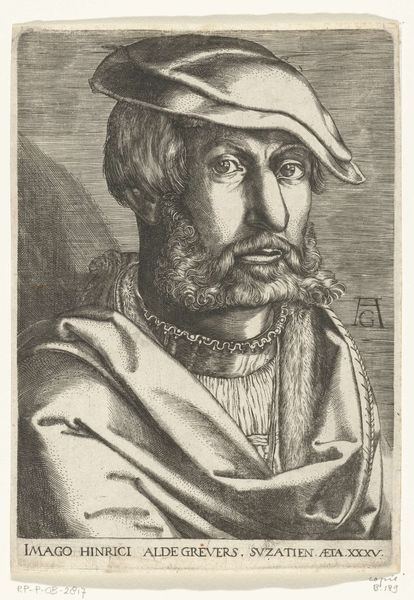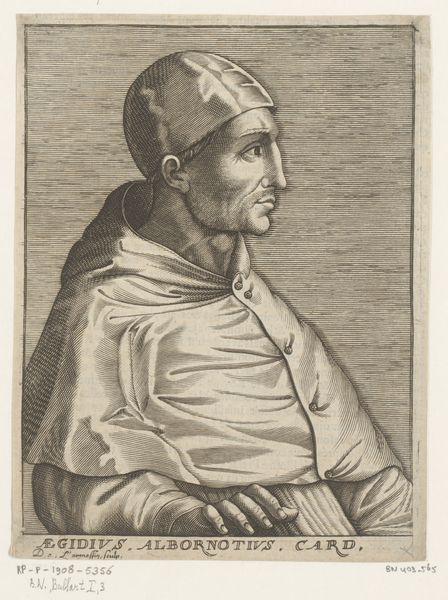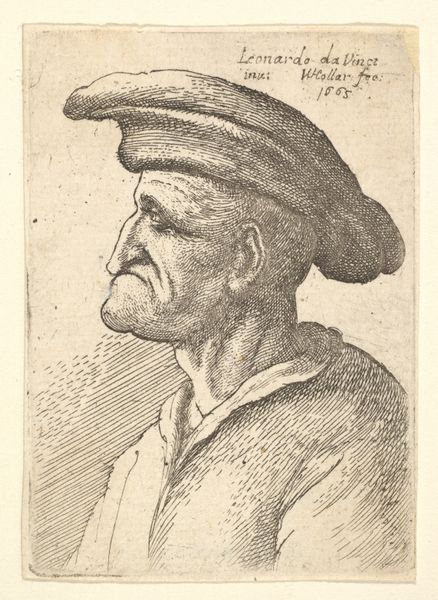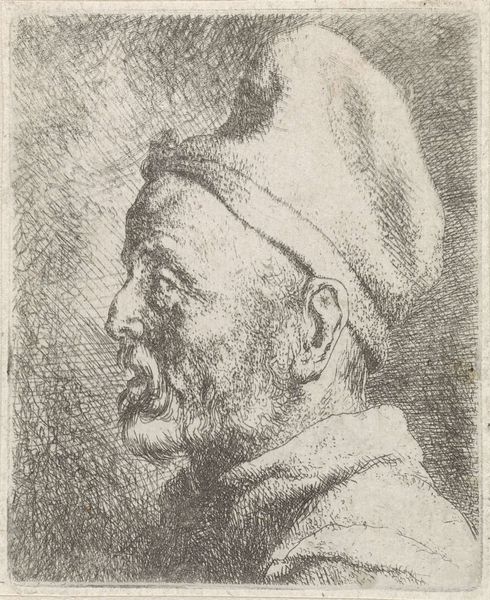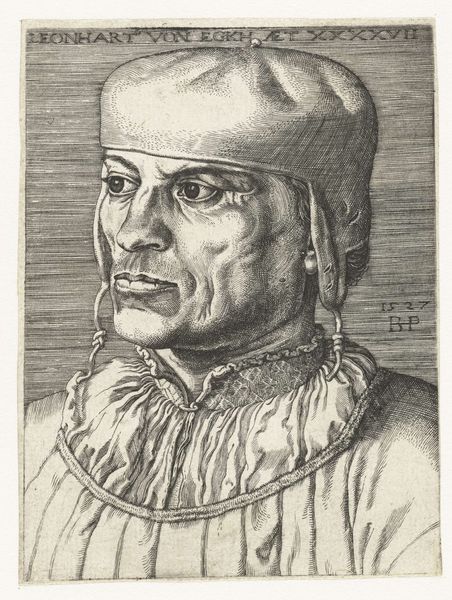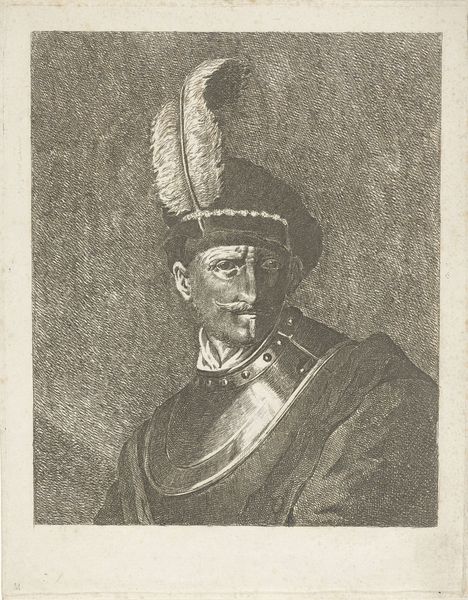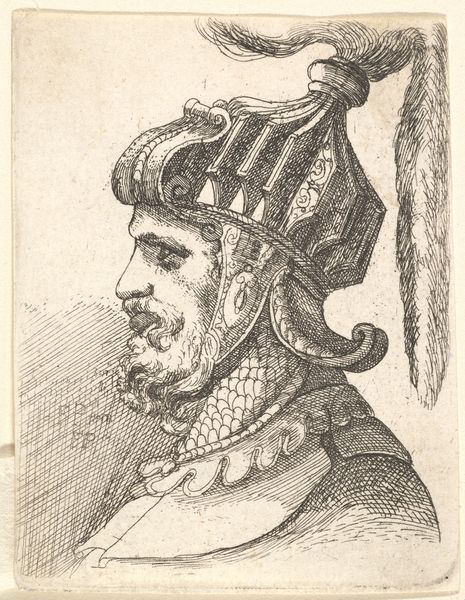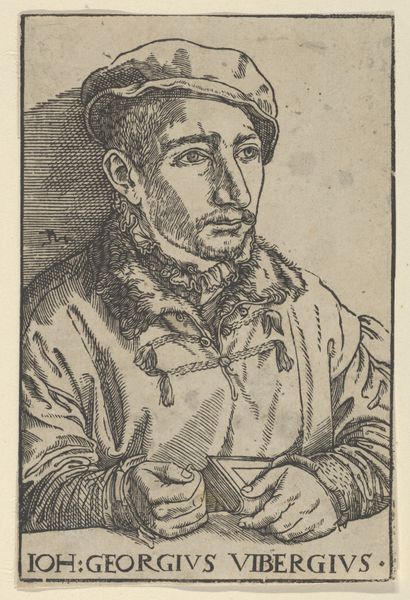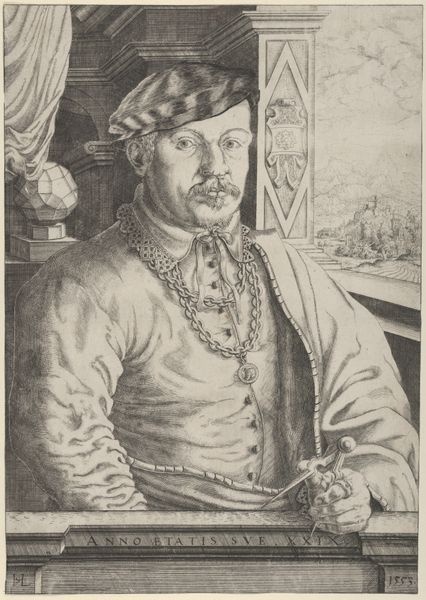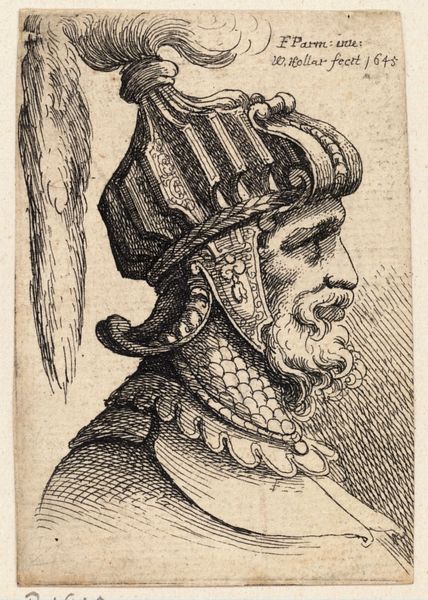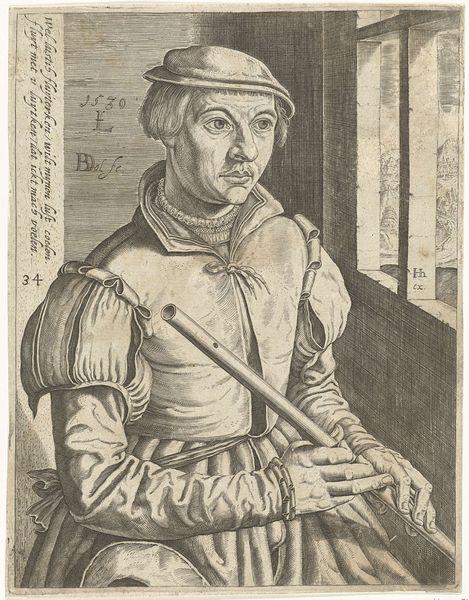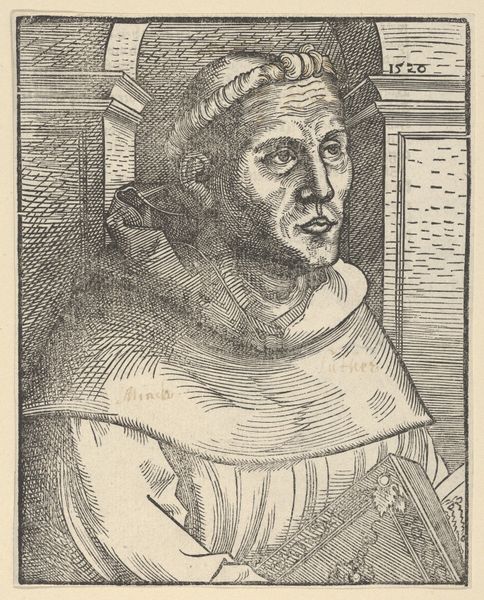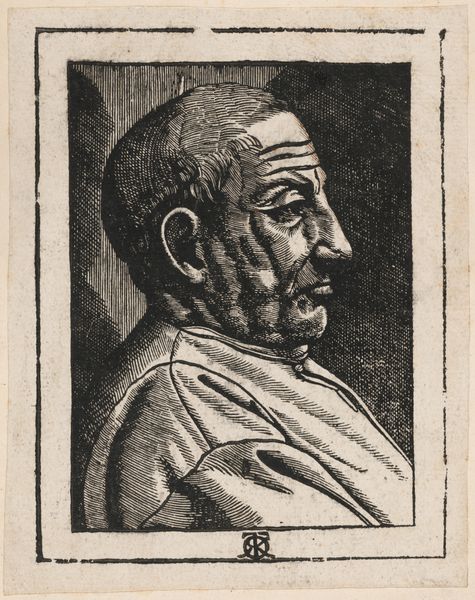
print, engraving
#
portrait
# print
#
pencil sketch
#
old engraving style
#
caricature
#
11_renaissance
#
portrait reference
#
pen-ink sketch
#
portrait drawing
#
history-painting
#
northern-renaissance
#
engraving
Dimensions: height 164 mm, width 146 mm
Copyright: Rijks Museum: Open Domain
Editor: Here we have Melchior Lorck's "Young Man Wearing a Cap," created in 1564. It's a print, currently housed in the Rijksmuseum. I'm immediately struck by the detail, especially in the rendering of the sitter's face and the background pattern. It almost feels like the subject is caught between worlds. What do you see in this piece? Curator: The portrait of a young man through engraving offers a powerful lens through which we might examine 16th-century Northern Renaissance ideals of masculinity and status. Think about it: who was typically portrayed, and why? This wasn’t just about representation, but about power dynamics at play. It also evokes notions of personal identity within the historical context of social and religious reformation in Europe. Consider, for example, the symbolic implications of the subject's cap, ruffle, and gaze. Do you think this clothing signified his social position? Editor: I hadn't really thought about the symbolic value of his clothing. It makes me wonder if his gaze conveys the anxieties or the uncertainties of that era? Curator: Exactly! Art provides a space for engaging with difficult dialogues about our past, and to address important conversations about our present, but can you observe if the lines evoke anxieties within this man's features? Editor: The deep lines and shadowing definitely create a feeling of solemnity or gravity that can be interpreted as worry. I appreciate you pointing out the intersection between artistic representation, social status, and the historical background because now it brings a whole new level of insight. Curator: I think that the layering of all of these contexts really amplifies our understanding and invites new ways to approach art history, wouldn't you say? Editor: I definitely agree. I’ll never look at historical portraiture in the same way. Thanks so much for your perspective.
Comments
No comments
Be the first to comment and join the conversation on the ultimate creative platform.
